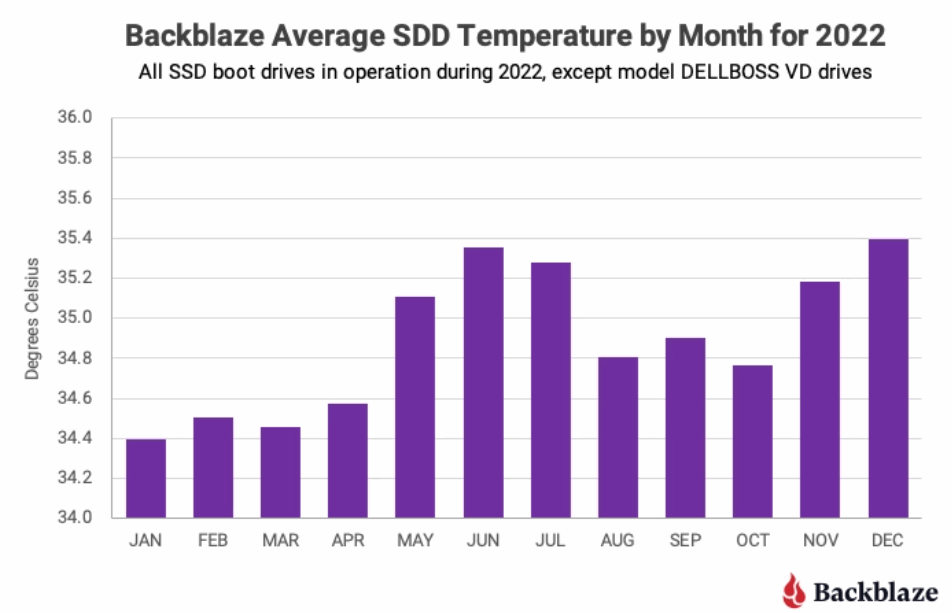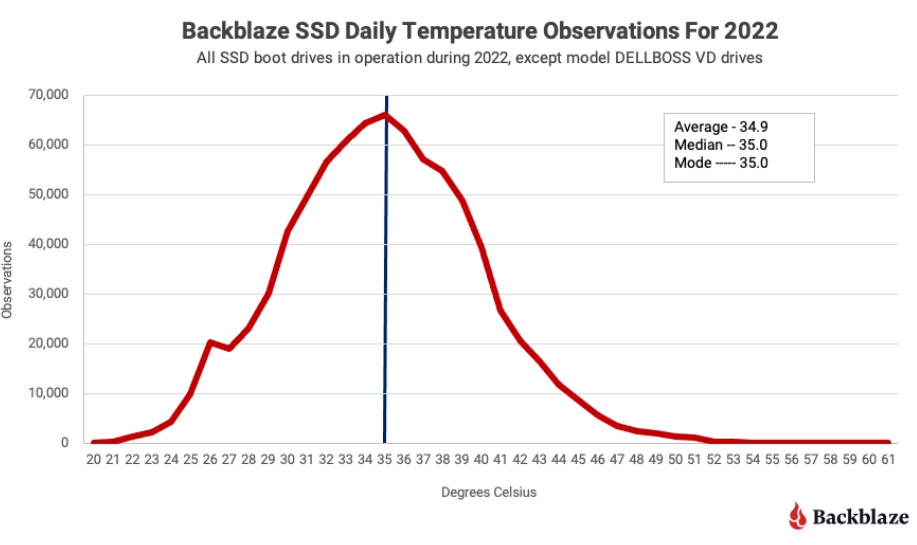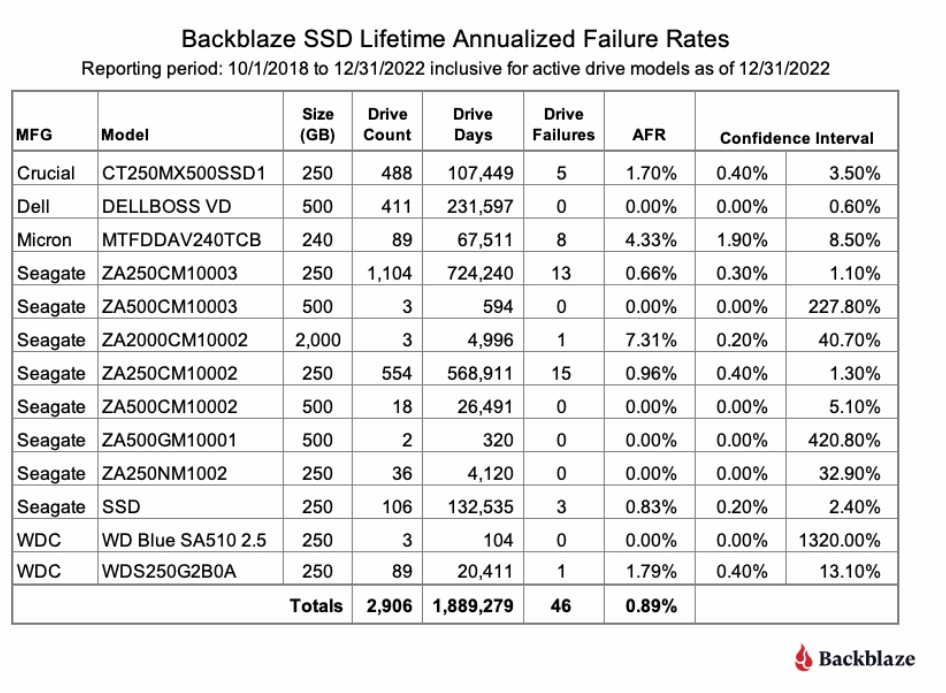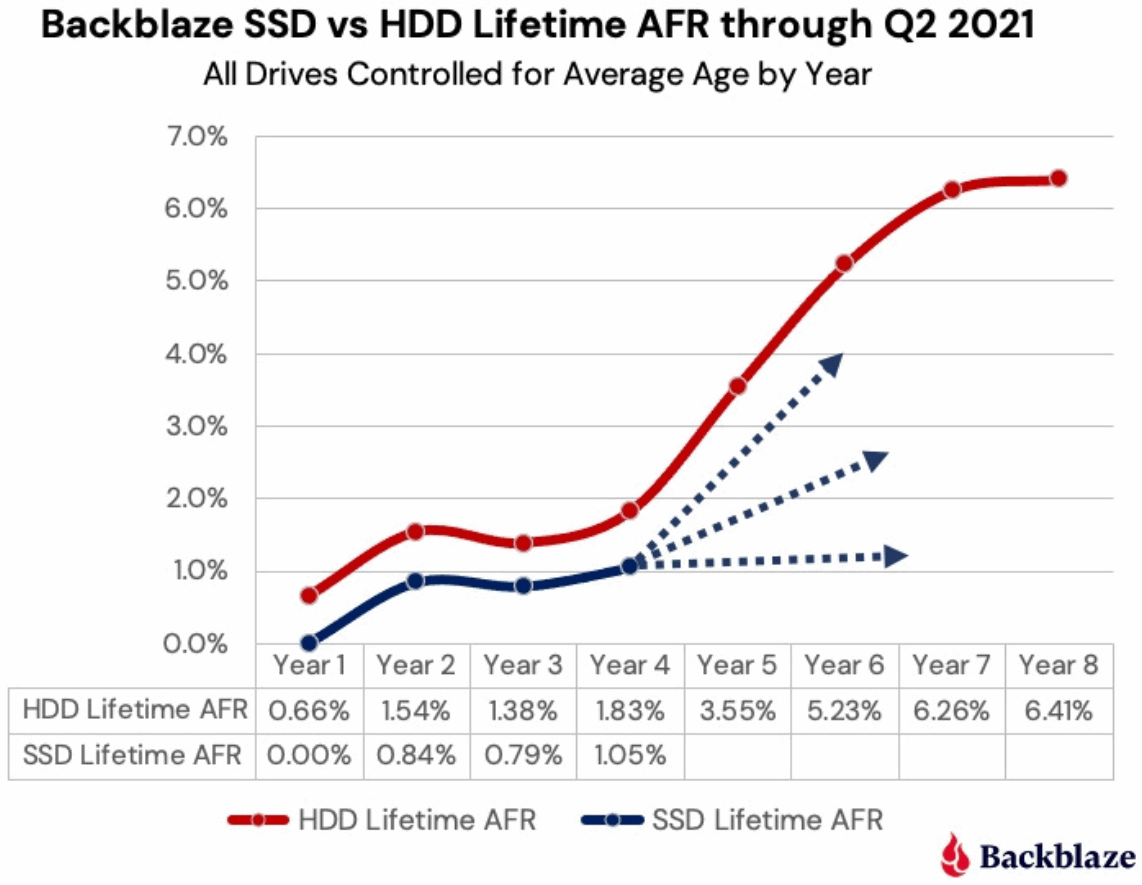Blackblaze, a data storage provider, has released its 2022 SSD Edition report, which examines the failure rates of solid state drives (SSDs) used as boot drives for their cloud storage platform. The report reveals that the failure rates of SSDs and hard disk drives (HDDs) are similar in the first few years, contradicting the widely held belief that HDDs fail faster due to many moving parts and complicated functioning.
The report indicates that the failure rate of both storage formats follow a nearly identical reliability trajectory, with statistically 1 and 1.85 percent of all SSDs and HDDs, respectively, failing in the fourth year of use.
The report also compares the temperature of SSDs and HDDs, revealing that SSDs do not necessarily run cooler. While the findings of the report are technically correct, Blackblaze suggests that the cost efficiency for cloud storage providers and consumers is not significantly impacted in the short term, and it remains to be seen whether SSDs can maintain their theoretical longer reliability in the long term. It's worth noting that the report's figures should be viewed with some caveats. Blackblaze acknowledges that many of the tested SSDs have not been in use long enough to provide a realistic view of the average failure rate over a longer period of time. Furthermore, the HDDs examined are getting quite old, with models already having an average usage period of more than 5 years and millions of drive days, while the number of SSDs examined is far lower.
Backblaze's findings show that the failure rates of SSDs and HDDs follow a similar trajectory. There are hardly any failures in the first year, considerably more in the second year, with a small drop in the third year. In the fourth year of use, statistically, 1 percent of all SSDs and 1.85 percent of all HDDs fail. After that, the failure rate of HDDs increases drastically, while it remains to be seen whether SSDs can maintain their theoretical longer reliability.
Overall, this report suggests that the failure rate of SSDs and HDDs are similar in the short term, but HDDs have a higher failure rate over the long term. However, this makes little difference to the cost efficiency for the cloud storage provider or to the consumer. Blackblaze's findings provide valuable insights into the lifespan of storage drives and can help users make informed decisions when choosing between SSDs and HDDs for their storage needs.
.png)




